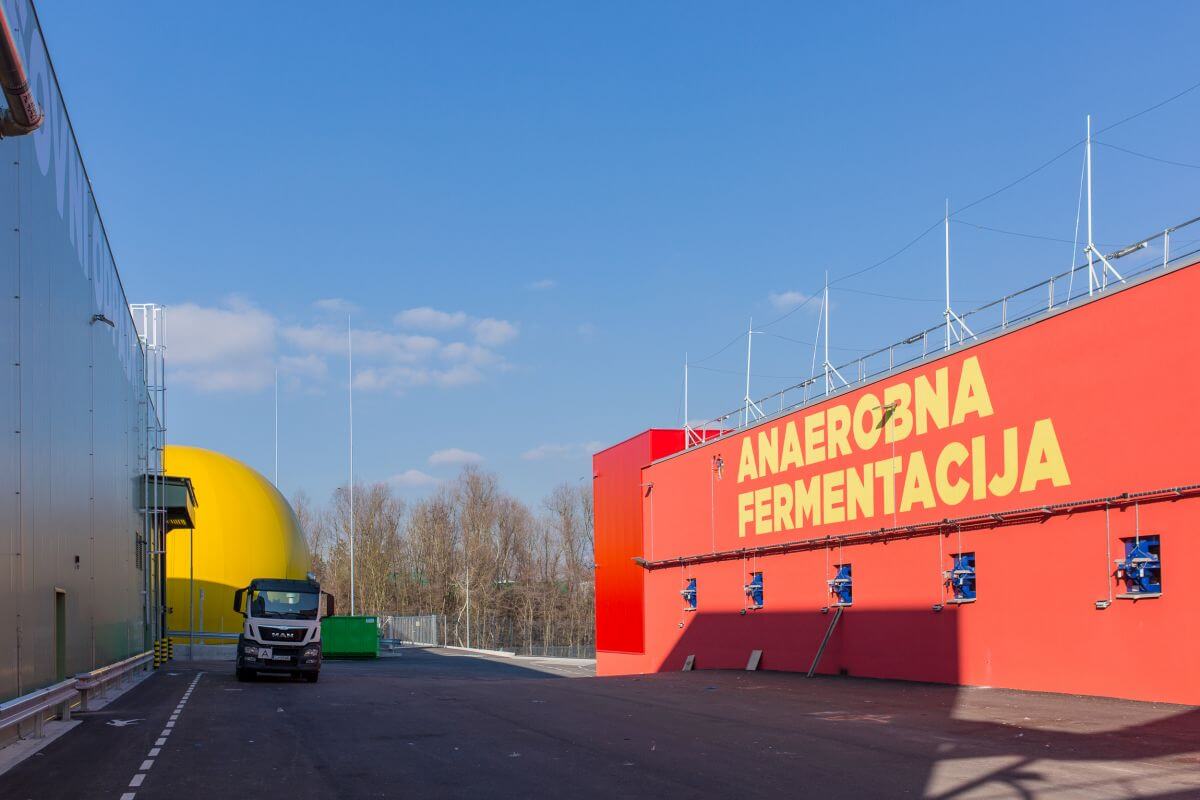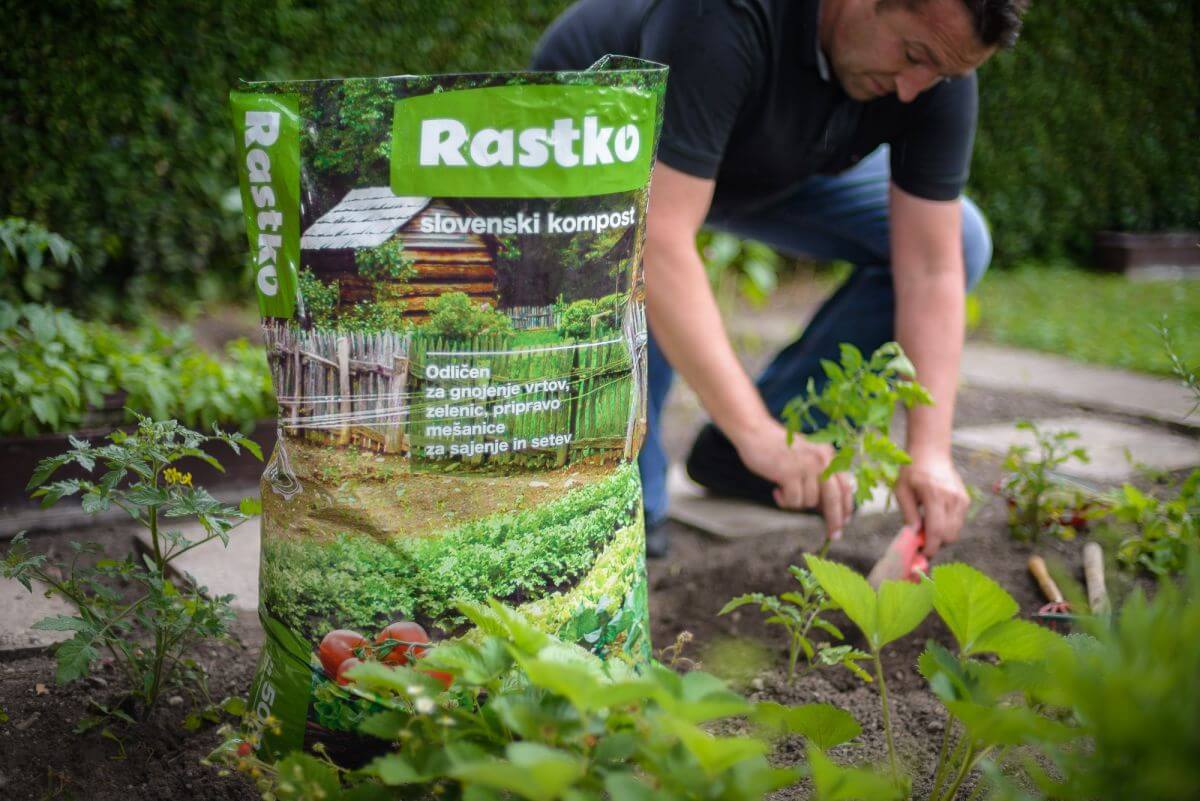Converting biowaste into biogas and compost
Biowaste travels via the yellow, orange and red parts of the plant. Biowaste is delivered by lorries through two sets of doors to a room the size of a small football field.

The bioreactor is a large concrete structure where organic substances are biodegraded (digestion) without the presence of oxygen in the process of anaerobic fermentation. A similar process takes place in the stomach of ruminants. There are special bacteria in the bioreactor which multiply and eat waste, which then decomposes to produce biogas. The separated biogas is collected in a big yellow domed gas holder and used to generate electricity and heat, which are needed for the remaining processes in the plant.
The other product of anaerobic fermentation is biomass. When it comes from the bioreactor, it is squeezed out, aired and left to mature in order to create compost. Plants and facilities of RCERO Ljubljana can process over 20,000 tonnes of biowaste annually. Using state-of-the-art technology, treatment produces prime quality compost called Rastko, which can be used to fertilize gardens and fields.



